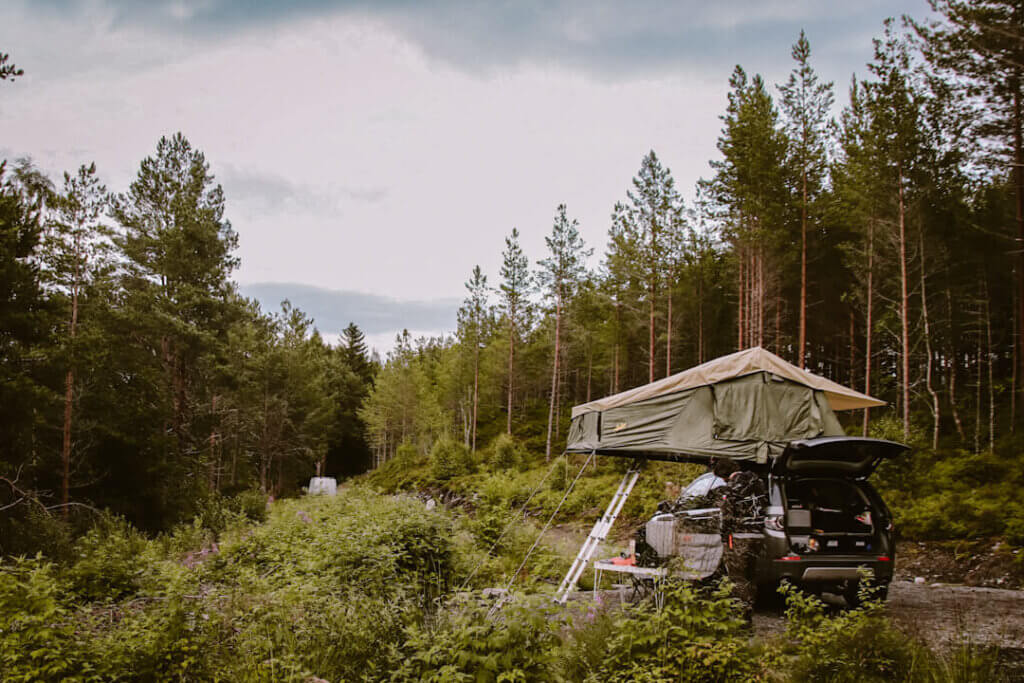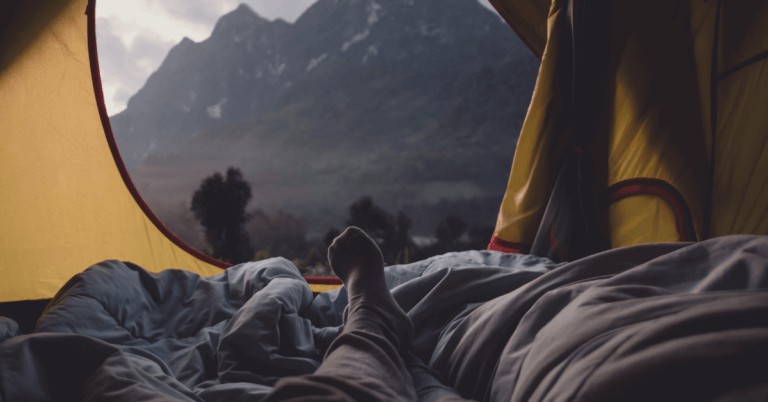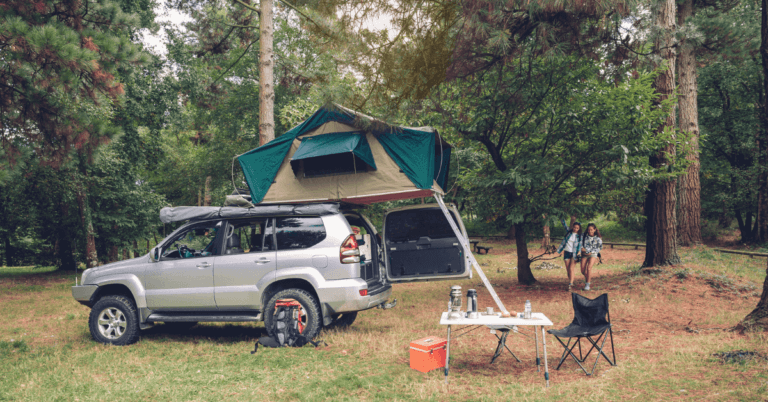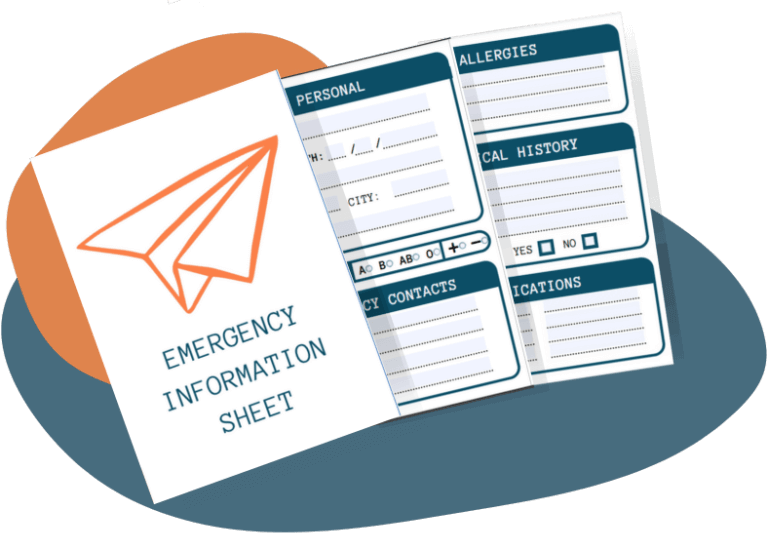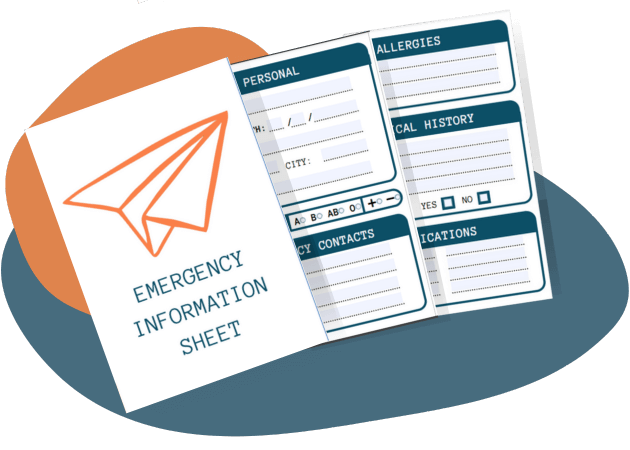overlanding gear
Want to start overlanding?
Deciding what to bring on your adventures can be overwhelming!
Countless blogs are saying you’d either ‘learn as you go’ or that you ‘shouldn’t think about leaving without installing a
€1000 winch on your bumper‘.
Storage space in your vehicle can be limited, and as a beginner, you might not be ready to spend the big bucks on fancy accessories.
While the overlanding gear you’ll need heavily depends on where you’ll be traveling or what kinds of roads you intend on taking –here’s a list of 20 essentials every overlander should bring on their trip.
Get your notebooks ready, cause you’ll want to write this down!
GEAR
Flashlight
Nowadays, every smartphone has a flashlight function, so bringing a separate one might seem like an abundance. However, using the flashlight on your smartphone will quickly drain the battery, and when you’ve parked in a dark spot like a forest, the light intensity might not be sufficient. Keeping a separate flashlight on hand will ensure you’ll always be able to see your surroundings, even at night.

We use the FENIX PD35. Its durability was (accidentally) tested inside a ship’s engine room, where it survived being underwater for over a year.
It found its way back into our overlanding gear after Jarits was able to retrieve it, and after a quick charge, it still works flawlessly ‘til this day. WHAT A TROOPER!
Duct Tape & Tie-raps
Duct tape and tie-raps are the universal duo for quick repairs on your vehicle. Sealing a leak, holding parts of your bodywork together, or hanging stuff like camping lights,… With a bit of creativity, these two will go a long way.
Although they’re ‘band-aid‘ options, they might be able to keep you rolling until you can make more permanent fixes.
Multitool
Once described by Jarits as the ultimate overlanding tool, and not coincidentally, the first thing I got when I started overlanding.
As the name suggests, a multitool includes pliers, a screwdriver, a knife, a bottle opener, and much more.
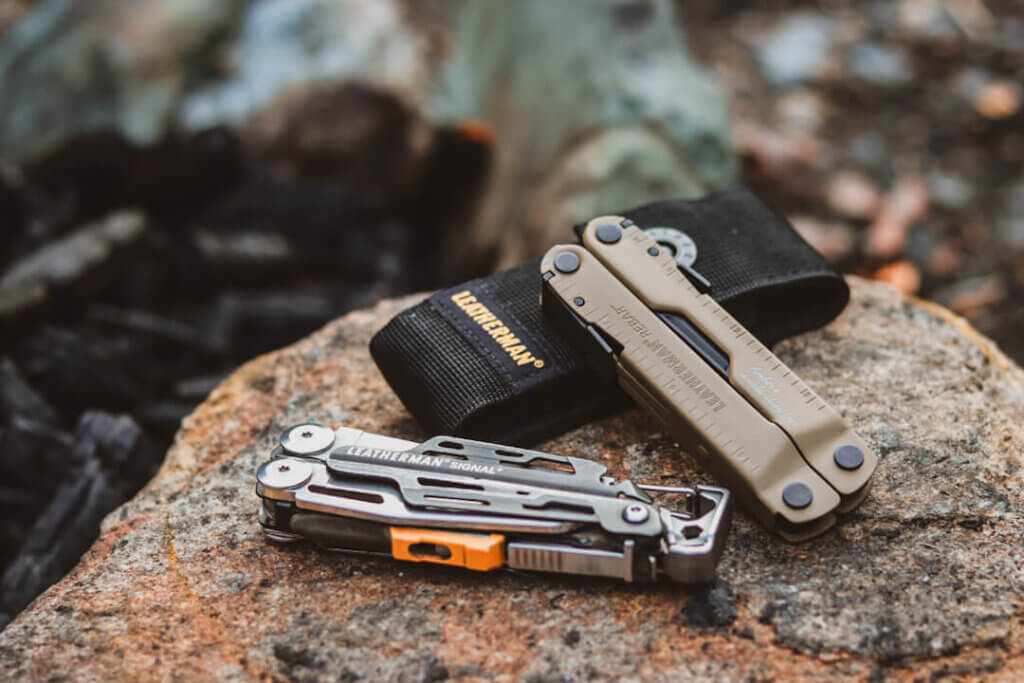
We both chose a Leatherman multitool. Fully customizable and with a 25-year warranty, these tools will last you a lifetime.
With the personalization option, they make the perfect gift for your fellow travelers.
Shovel
Take it from me, after having to shovel snow out from under the car with a dustpan, a shovel has become an absolute staple in my overlanding gear!
But it won’t just come in handy when you’re digging out your car. Especially in more secluded areas like a forest, you might have to resort to going ‘au naturel‘ when it’s time for a bathroom break.
To safely dispose of your waste, you’ll need a shovel to dig a cat hole that’s deep enough (‘Leave no trace‘ recommends 15-20cm).

You probably don’t have the room in your vehicle to pack a traditional shovel, so a foldable version like this is a great choice.
Lighter
A complete necessity but easily forgotten. From lighting your gas stove to starting a campfire, a lighter is an absolute essential you’ll use every day.
If you don’t have a lighter lying around your kitchen cabinets, try shopping for a refillable one: great for your wallet and the environment.
CAR
Passport & Car / Insurance Documents
We suggest keeping extra copies of all your car documents, passport, and insurance in a safe spot.

Never leave your passport in the vehicle! Chances are small, but if your car were to get stolen, you’d be left without any form of identification.
This will make getting home safely a thousand times more difficult.
Spare Tire
Nothing kills the mood faster than a flat tire. Most likely, it’s already in your car. Before leaving on your trip, it’s best to check where you can find it, and if it’s still in good condition.
Spare Fuses
A blown fuse can be noticed when part of your electronics stops working, like a headlight, blinker, or car cigarette lighter.
While this might be annoying, it means it has done its job of protecting your electrical system during a short circuit.
Most cars provide spare fuses, which likely can be found in the fuse compartment.
Before leaving on your trip, check where your car’s spare fuses are located, and if the set is still complete.
NAVIGATION
GPS
The best navigation for you highly depends on what kind of traveler you are.
If you mainly stick to the regular roads, a standard GPS app on your phone will go a long way.

If you’re just getting your toes wet with off-roading, you might not want to drop the big bucks on an off-road GPS like the Garmin Overlander. Luckily, off-road GPS apps offer the perfect middle ground.
Want to know our favorite? Check out our article on the best overlanding GPS app.

Don’t have the budget for a standalone GPS but you prefer the comfort of a bigger screen?
Try downloading your favorite GPS app on your tablet and use a secure holder like the ones from RAM Mounts to keep your tablet safe, even on the roughest surfaces.
ELECTRO
12V Car USB Adapter
If you chose a more modern vehicle to go overlanding with, you’ll probably already have some USB ports installed to charge your small electronics. Otherwise, a 12V Car USB Adapter will do the trick.
Powerbank
When you’re stationary, getting electricity can be trickier, since you don’t want to risk a flat car battery. Integrating a separate electrical system that runs on a second battery can get very expensive.
If you just started overlanding, the most accessible option is investing in a high quality Powerbank. You can charge it while you’re driving and it will assure a charged phone at all times.
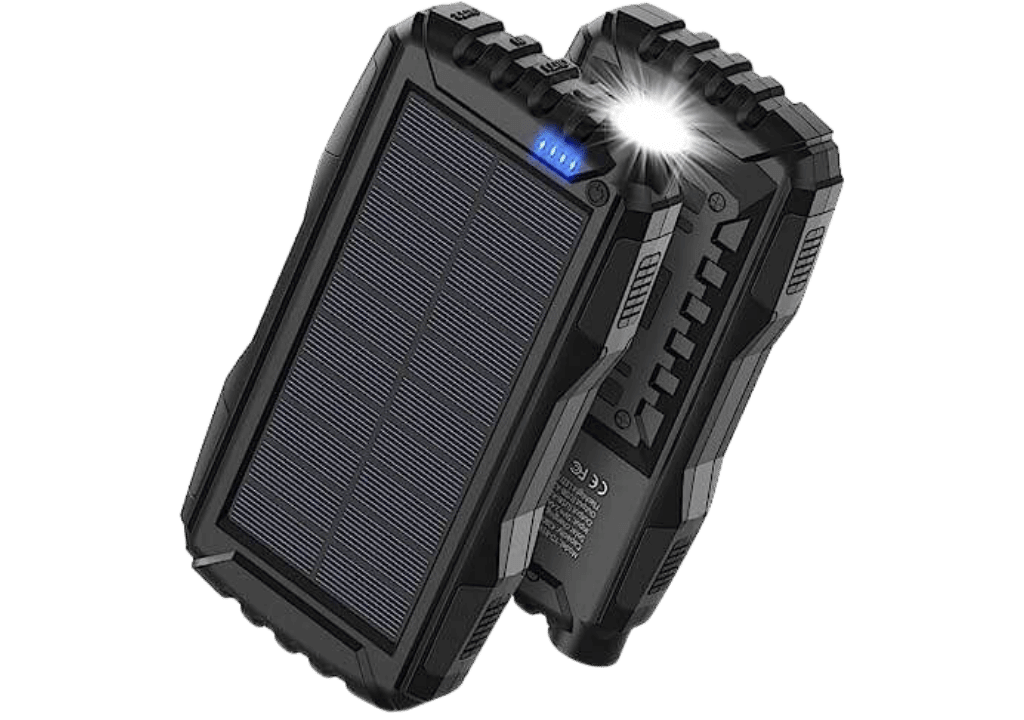
We love this Powerbank because it can also be charged by the solar panel on the side. It’s a bit heavier than other power banks, but the enormous battery will surely make up for its weight.
SLEEP
Sleeping Gear
An important part of overlanding is car-based camping. Whether you install a rooftop tent or convert your rear seats into a bed, is up to you.
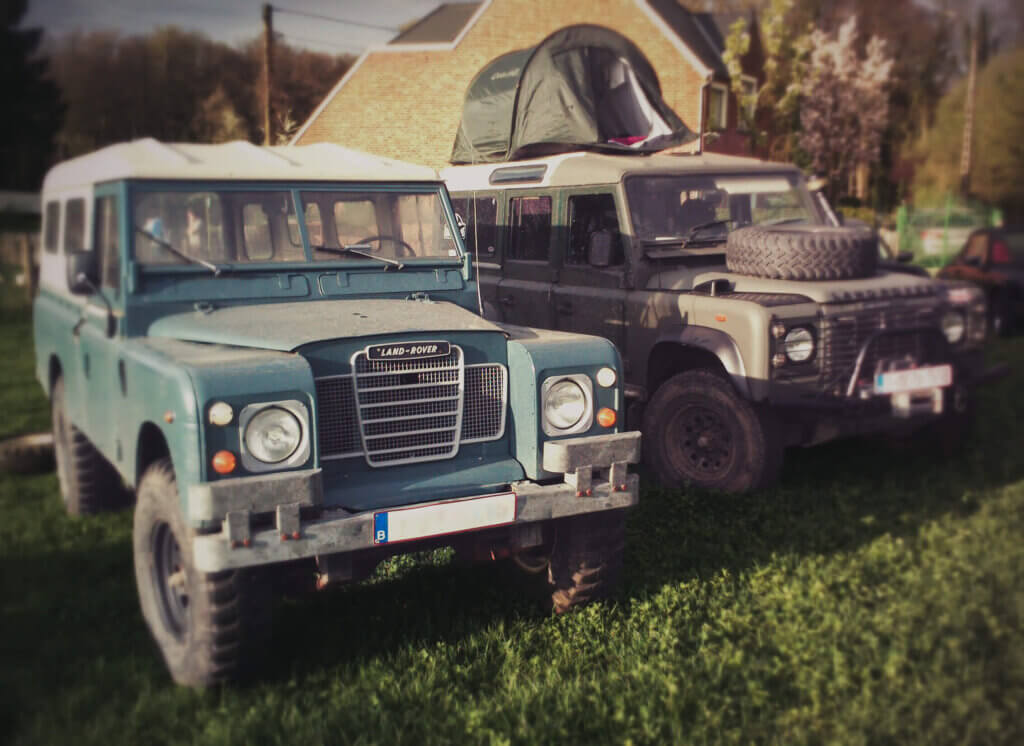
One time Jarits put a regular tent on top of his Landy. Overlanding draws on your resourcefulness, so if you get a bit creative, you won’t need a big budget to create a cozy sleeping area.
NUTRITION
Cooking Gear & Cutlery
If you’re traveling in a remote area, food choices may be limited. Make sure to stack up on food and snacks before heading off into the wilderness.
A basic set of cutlery, a little gas stove, and some pots will go a long way.
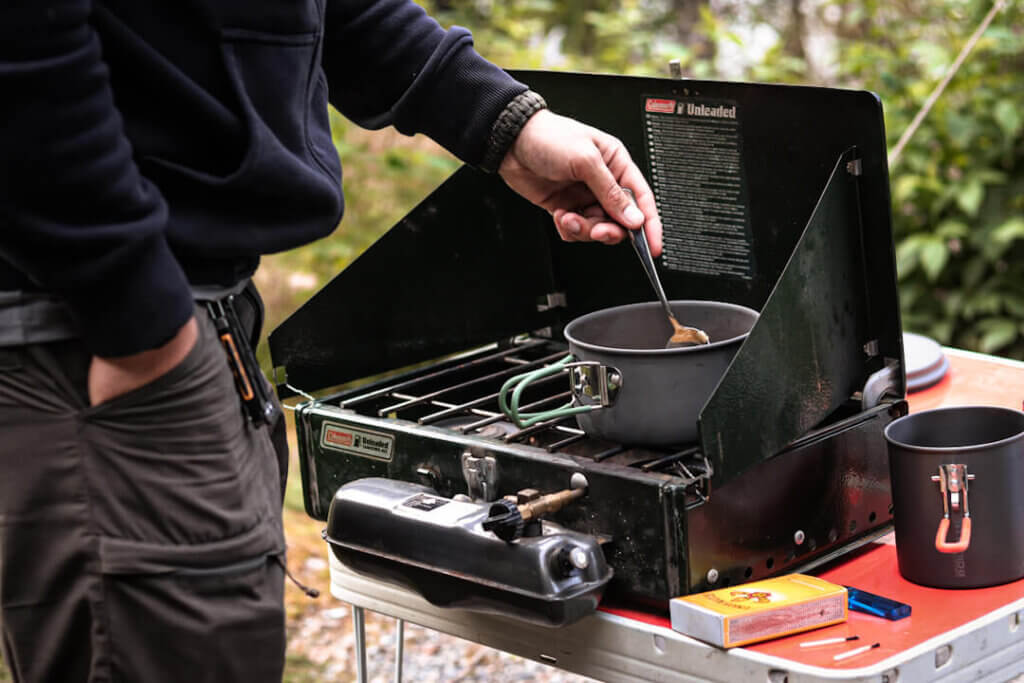
We use this compact camping cooking set and this Coleman gas stove, but any little canister stove like this one from MSR will do.

Invest in an enamel cup. It can be used all day long, from your morning coffee to your evening wine, it’s durable and it can be easily cleaned. The only cup you’ll ever need on your trip!
Water(tank)
Probably the most crucial item on this whole list: WATER!
The general rule is a gallon/person/day. This number contains drinking water, water for cooking/dishes, and water for washing yourself.
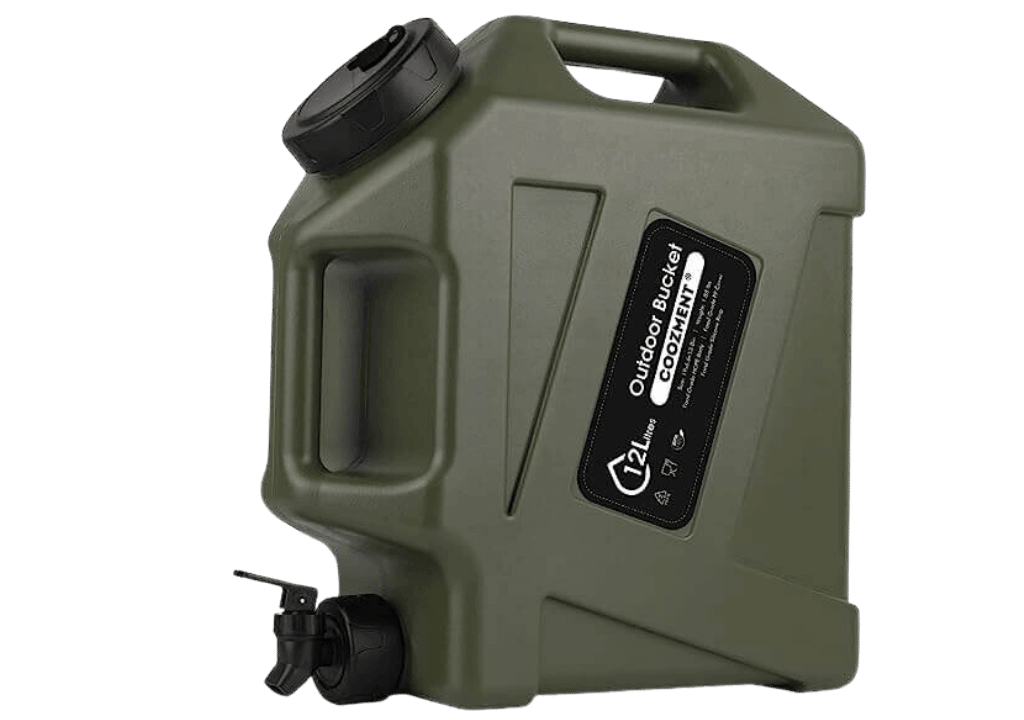
While you can invest in a big water tank like this one from Front Runner, if you don’t plan on going that long without access to drinking water, a smaller one like this might be sufficient.
Alternatively, big 5l water bottles have been a lifesaver for us when we were starting. Think about the environment and refill the bottles rather than throwing them away!
Cooler/ Compressor Fridge
The last thing you want is to get sick during your overlanding trip, so you’ll need to keep your food cool, especially meat and dairy.

A compressor fridge is the most convenient and energy-sufficient option, but if you’re on a tight budget and don’t plan on going to extremely hot places, a thermo-electric cooler is also capable of keeping your food ( &beer) cold.
SAFETY
Reflective Safety Jacket
After an accident or if you’re experiencing a car breakdown at night, you should have a reflective safety jacket on hand to increase your visibility.
In some European countries, like Belgium and France, it’s even part of the mandatory equipment for your vehicle.
Fire Extinguisher & Blanket
Even when you only start a campfire where it’s permitted, and take all the precautions when cooking with fire, accidents do happen.
While a fire extinguisher is perfect to put out small fires in or around your vehicle, never use it directly on a person! The chemicals inside the extinguisher can harm the person even further. In this case, you’ll need a fire blanket to extinguish the fire.
A fire extinguisher is part of your car’s mandatory equipment.

Make sure to check the expiration date before leaving on your trip!
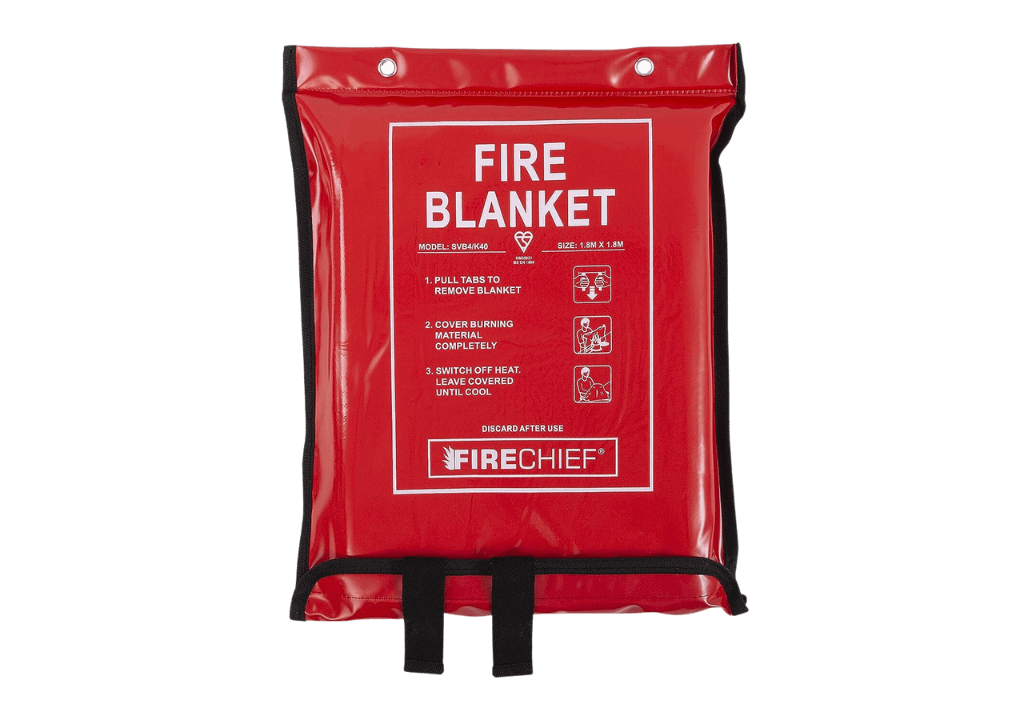
Most fire blankets have compact packaging, so placing them somewhere near your kitchen set-up shouldn’t be a problem.

Make sure you buy a big enough fire blanket! Most fire blankets are designed to put out small cooking fires, but will not be big enough to completely cover someone when their clothes were to catch fire.
I recommend a minimum size of 1,2m x 1,8m.
First-Aid Kit
Safety above everything. In most countries, it’s necessary to have a first-aid kit in your vehicle. But you shouldn’t just put the first kit you find in your car and call it a day.
A good first-aid kit is personalized to your needs and has all the necessary medical information so bystanders can easily offer help.
Don’t know where to start? Check out ‘5 mistakes you shouldn’t make in your overlanding First-Aid Kit’
OFF-ROAD
Recovery Kit
If you drive off-road, the question is not ‘if’, but ‘when’ you’ll get stuck. A good recovery kit will keep your mind at ease.
While a winch can be the most obvious choice to get you unstuck, it’s also really expensive. A Hi-Lift can be used for emergency maintenance on your vehicle, but it can also double as a hand winch if you know how to use it.
You’ll also need a sling and shackles to do this. The sling will fixate your hi-jack around a nearby object like a tree. The shackles will ensure a safe connection between the two.
Air-Compressor/ Tire-Deflator
When driving on terrain like sand, mud, or rocks, it might be advised to deflate your tires to get a better grip. To do this, you’ll need a tire deflator. To fill them back up afterward, you’ll need an air compressor.
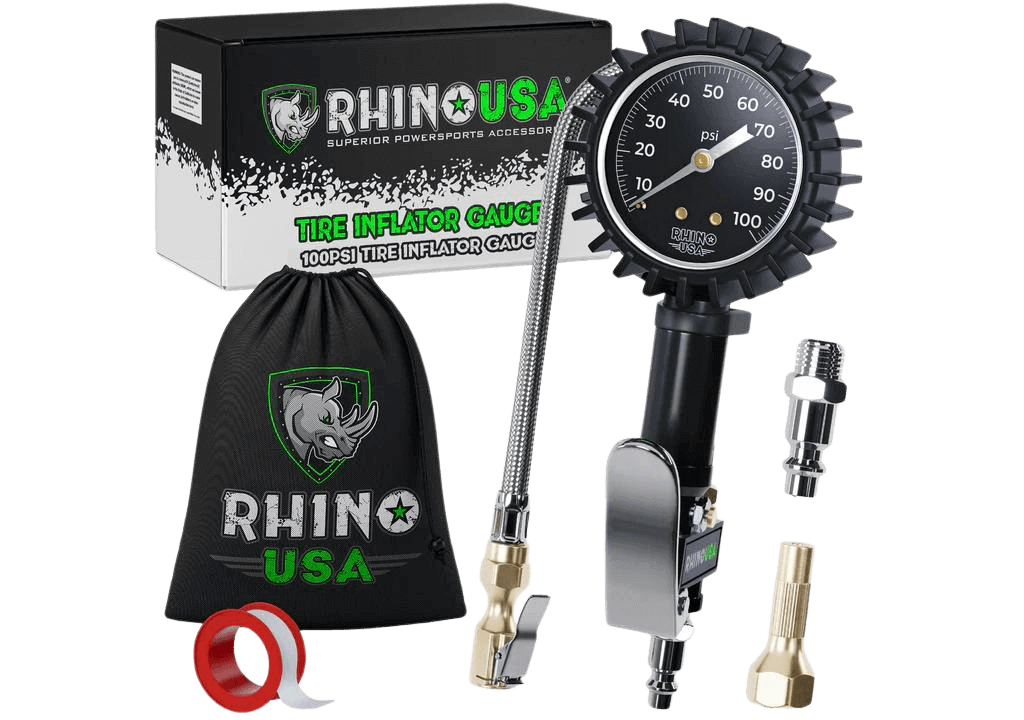
There are many different compressors on the market. Which one will work best for you depends on the size of your tires and if you want to add extra air-consumers like an air-lock in the future. If you simply want to be able to re-inflate your tires, we suggest starting out with a simple compressor like this.
Your overlanding gear will grow and adapt with you as you become a more experienced overlander.
But for now, you have all you need to get started. It’s time to pack your car!


